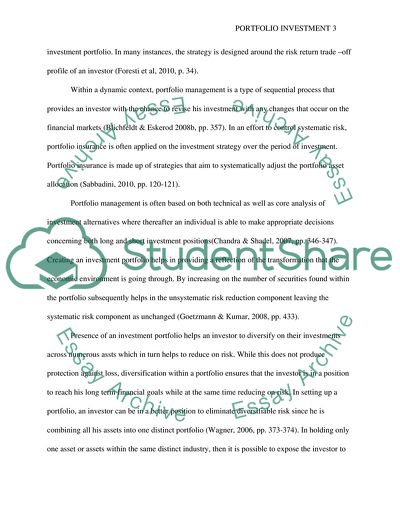Cite this document
(Critically evaluate the statement that the objective of portfolio Essay, n.d.)
Critically evaluate the statement that the objective of portfolio Essay. https://studentshare.org/finance-accounting/1865753-critically-evaluate-the-statement-that-the-objective-of-portfolio-investment-is-to-minimise-risk-with-examples-and-discuss-the-differences-between-systematic-and-unsystematic-risk
Critically evaluate the statement that the objective of portfolio Essay. https://studentshare.org/finance-accounting/1865753-critically-evaluate-the-statement-that-the-objective-of-portfolio-investment-is-to-minimise-risk-with-examples-and-discuss-the-differences-between-systematic-and-unsystematic-risk
(Critically Evaluate the Statement That the Objective of Portfolio Essay)
Critically Evaluate the Statement That the Objective of Portfolio Essay. https://studentshare.org/finance-accounting/1865753-critically-evaluate-the-statement-that-the-objective-of-portfolio-investment-is-to-minimise-risk-with-examples-and-discuss-the-differences-between-systematic-and-unsystematic-risk.
Critically Evaluate the Statement That the Objective of Portfolio Essay. https://studentshare.org/finance-accounting/1865753-critically-evaluate-the-statement-that-the-objective-of-portfolio-investment-is-to-minimise-risk-with-examples-and-discuss-the-differences-between-systematic-and-unsystematic-risk.
“Critically Evaluate the Statement That the Objective of Portfolio Essay”. https://studentshare.org/finance-accounting/1865753-critically-evaluate-the-statement-that-the-objective-of-portfolio-investment-is-to-minimise-risk-with-examples-and-discuss-the-differences-between-systematic-and-unsystematic-risk.


